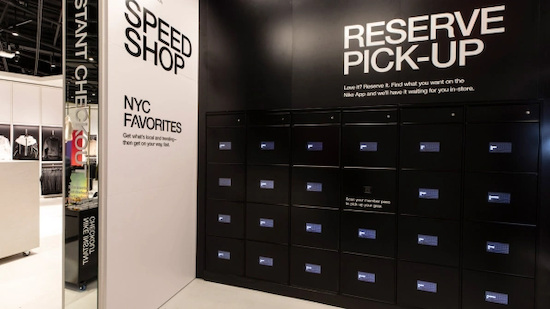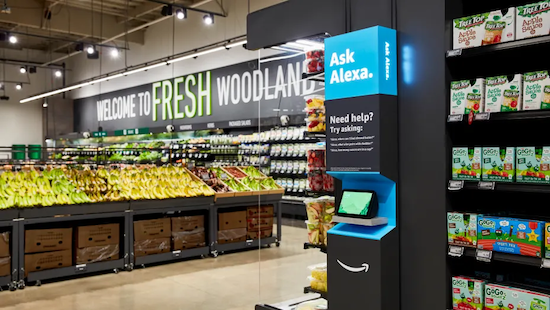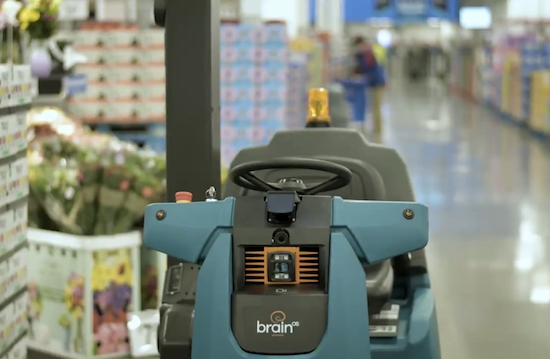March 14, 2023
Os varejistas estão firmemente a bordo do trem da transformação digital, reinventando a forma como fazem negócios para encantar os consumidores com experiências omnichannel e personalizadas. Os stacks de tecnologia monolíticos ficaram no passado, sendo substituídos por modelos de arquitetura ágeis e componíveis que sustentam o sucesso dos negócios hoje e no futuro.
No entanto, na corrida para se digitalizar, muitos varejistas deixam passar despercebido o volume sem precedentes de dados que essas novas (e já existentes) tecnologias geram. Embora muito esforço seja investido na otimização da experiência do cliente (CX), estabelecer como armazenar e analisar tantos dados frequentemente se torna uma preocupação secundária.
Neste blog post, analisamos os diferentes tipos de dados gerados no varejo, as novas tecnologias que aumentam essa carga e a importância estratégica do gerenciamento de dados para manter um negócio saudável e lucrativo.
>> Agende uma demonstração personalizada com nossa equipe de especialistas e veja como o iPaaS da Digibee trará eficiência ao seu negócio.
Dados de varejo e por que eles importam
Os varejistas geram dados em toda a operação, tanto na linha de frente quanto nos bastidores. Cada clique, seleção ou interação com o cliente; cada SKU, venda e mudança no estoque geram mais dados que precisam ser gerenciados.
Os dados no varejo podem ser divididos em três categorias, dependendo da fonte:
- Dados estruturados são organizados e geralmente armazenados em um banco de dados, arquivo ou planilha. Exemplos incluem ponto de venda, estoque, hierarquias de produtos, etc.
- Dados não estruturados não são organizados e são salvos em seu formato original. Exemplos incluem avaliações de clientes, dados de localização, tweets, fotos, hashtags, etc.
- Dados semiestruturados ficam no meio-termo entre as duas categorias. Eles não são capturados ou formatados por métodos convencionais, mas podem ter informações associadas, como marcações de metadados. Exemplos incluem e-mails, arquivos XML, arquivos compactados, etc.
Quando combinadas, essas informações coletivas são conhecidas como Big Data, com ênfase no “big” (grande).
Considere o maior varejista do mundo: Walmart. A empresa coleta 2.5 petabytes de dados não estruturados de um milhão de clientes a cada hora. Adicione a isso os dados gerados por 245 milhões de clientes que visitam 10,900 lojas físicas, complementados com 10 sites ativos, e o escopo do Big Data da empresa é impressionante.
Essas informações coletadas têm um impacto significativo. Por exemplo, os sistemas internos de análise do Walmart processam quase 100 milhões e palavras-chave todos os dias para otimizar os lances em anúncios, levando em consideração milhões de produtos e centenas de milhões de clientes vindos de diversas fontes. Apenas com essa iniciativa de dados, o Walmart alcançou um aumento de 10 a 15% nas vendas on-line para US$ 1 bilhão em receita incremental.
Colocando seus dados em ordem
Embora poucas empresas operem no mesmo nível do Walmart, a necessidade de coletar e integrar dados de uma variedade de componentes geradores de informações é um requisito absoluto para a transformação digital, independentemente do tamanho do varejista.
A integração empresarial é um facilitador crítico para alcançar esses resultados, simplificando a coleta de dados estruturados, não estruturados e semiestruturados em toda a operação, contribuindo para um Big Data consolidado.
Um bom exemplo é a Payless, rede internacional de varejo de calçados self-service, com quase 4,500 lojas em 30 países. O varejista implementou a tecnologia de plataforma de integração empresarial como serviço (eiPaaS) para conectar uma nova plataforma de comércio eletrônico à sua infraestrutura de varejo existente.
O resultado é um fluxo contínuo de dados de e para o sistema, suportando um banco de dados consolidado que melhora as análises e os insights. Com uma plataforma de e-commerce moderna funcionando a todo vapor, a Payless consegue proporcionar uma experiência aprimorada ao cliente, mesmo durante picos de vendas na Black Friday e outros dias de alto volume.
Com a integração empresarial, os varejistas aproveitam um repositório rico e sempre atualizado de dados, que pode ser continuamente analisado para descobrir insights significativos. Estes incluem:
- Experiências personalizadas do cliente
- Previsões de tendências e gastos
- Previsão de demanda
- Otimização de preços
- Insights da jornada do cliente
Nova tecnologia de varejo = mais dados
Mesmo depois de organizar sua estrutura de dados, o trabalho não para. Mais clientes significam mais interações digitais, gerando ainda mais dados. O mais impactante é a adoção de tecnologias emergentes, um fator-chave para iniciativas de transformação digital.
Atualmente, os sites de e-commerce e as interações remotas geram a maior parte dos dados no varejo. No entanto, as lojas físicas também se tornaram geradoras de dados em sua própria essência. Aqui estão alguns exemplos de tecnologias inovadoras que estão chegando ao varejo e contribuindo para o Big Data:
Compras digitais e com curadoria
A loja Nike NYC House of Innovation oferece aos clientes uma experiência imersiva e digitalmente aprimorada, incluindo zonas geográficas interativas que podem ser exploradas escaneando QR codes pelo celular.
(Crédito da foto: Nike)

O espaço inclui uma Nike Speed Shop, onde os clientes reservam itens online, experimentam e compram na loja. A mercadoria pré-selecionada é colocada em armários que os clientes abrem com o smartphone.
A loja conta ainda com um espaço de customização onde o consumidor personaliza os produtos com as cores e características que desejar.
Check-out automatizado
Todo mundo está familiarizado (embora talvez não encantado) com os quiosques de autoatendimento. O checkout automatizado está evoluindo, com visão computacional, aprendizado profundo e tecnologia de fusão de sensores para automatizar o pagamento e o check-out.
(Crédito da foto: Amazon)

A Amazon é uma pioneira nessa área, onde os clientes entram em uma loja, selecionam itens e saem sem fazer fila ou fazer check-out. O pagamento é automatizado através do aplicativo Amazon Go.
Robôs de análise de inventário
A adoção de novas tecnologias não se limita às interações com os clientes. O Sam’s Club depende de automação robótica motorizada com sistemas operacionais de inteligência artificial para analisar estantes em suas lojas.
(Crédito da foto Sam’s Club)

Os dados coletados são usados para verificar a precisão dos preços, confirmar a localização dos produtos em relação à planta baixa e monitorar os níveis de estoque.
Embora radicalmente diferentes em termos de tecnologia e casos de uso, todos esses modelos inovadores de tecnologia de varejo têm uma coisa em comum: dados. E muitos.
O gerenciamento de tantas fontes de dados diversas tornou-se um imperativo comercial, fornecendo às organizações de varejo insights que ajudam a tomar decisões importantes, hoje e no futuro.
A tecnologia da Digibee permite uma estratégia de dados resiliente e ágil que cresce facilmente com sua organização, independentemente do tamanho ou escala. Ajudamos nossos clientes a evoluir seus negócios, aproveitando os recursos da nosso iPaaS low-code para integrar sistemas modernos com tecnologias existentes, agilizando o fluxo de dados em toda a operação para uma visão única do negócio.
Se você estiver interessado em saber como a Digibee pode ajudar sua organização de varejo, teremos prazer em mostrar. Agende uma demonstração com nosso time de especialistas para saber mais.








